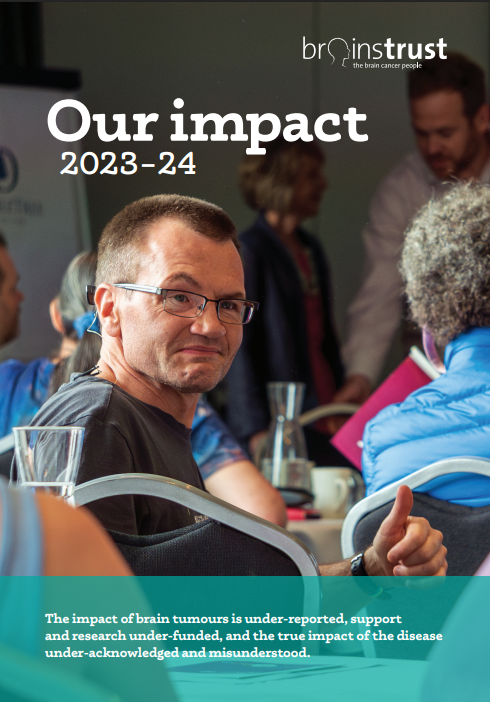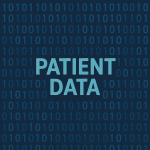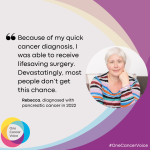From the first symptoms through to diagnosis and treatment James has dealt with his brain tumour diagnosis all whilst juggling a demanding career and preparing for the birth of his first child. Here James tells his story thus far.
My brain tumour timeline started in early to mid-2021. I was getting married to my now wife, however Covid-19 thwarted that twice, partly as my wife is Australian so her family couldn’t get to the UK. So my wife and I had decided to try and start a family rather than wait until after our wedding. We were both in finance jobs that were fairly time intensive and I had been in these types of roles for around 15 years.
I had a serious disagreement with a work colleague in mid-2021 and entered mediation around the same time. Around then I started to experience sudden feelings of wanting to vomit during the night but I was never sick and this extended to a smell of bleach that wasn’t there. I initially thought it was due to being in a stressful situation at work. I ended up resigning from my job partly due to this, as I felt it wasn’t worth my health.
Once I left my job, rather than my symptoms improving they actually got worse. The feelings of wanting to vomit was happening two or three times a day and rather than only at night, it was occurring during the day. By this point I had been to a GP a couple of times and had blood tests etc, which all came back normal.
Towards the end of 2021 my wife and I found out we were going to have our first baby so 2022 was going to be an exciting year with a new job and a baby.
After becoming frustrated with the symptoms, I asked for a referral and the GP referred me to a gastroenterologist. The specialist was slightly confused by the symptoms and asked if I minded taking several tests to rule out other issues. One of the tests was a CT scan which was scheduled for the 5 January at 9am. After the initial CT scan the nurse came in and said the specialist had been walking past at the time and suggested I have dye/contrast injected, which was fine by me. I really didn’t have any idea what they were looking for or what could show up through the CT scan.
At midday on the 5 January I was called by the gastroenterologist who said they had found a “mass on my brain” and I should go straight to A&E. My wife took me to A&E for a further full body CT and MRI scan. Luckily the CT scan showed no other issues (i.e. the brain tumour was a primary not secondary) and the MRI the next day showed more detail of the tumour.
I was referred to a consultant surgeon who explained that the tumour was a right fronto-temporal insular astrocytoma. Unfortunately it was in a difficult position as it was in the middle and went down through the brain. As such, some of the tumour couldn’t be removed without a significant risk, but a decent amount of debulking could be performed (approximately 70%, which was the size of a satsuma) plus that would allow a full tissue diagnosis.
I was told the tumour wasn’t genetic or lifestyle based which was a relief as I knew we had a baby on the way.
I also spoke to a Neurologist who explained my symptoms were a form of seizure, which was fairly strange as I always thought seizures were similar to convolutions.
I have never googled the tumour, solely relying on the experts if I had any questions. I have never asked for a long term prognosis. I haven’t told people from a work/industry position as I didn’t want to risk my long term employment chances or become something everyone asks me about.
After speaking to brainstrust I spoke to another surgeon to get a second opinion who confirmed everything I had been told in terms of what could be removed.
My wife and I were married in January 2022, partly to make things easier if the worst were to happen. Only my parents were there as witnesses as it didn’t feel like our true wedding.
I had my operation in April 2022 and it was successful (removing 70%) and I had no noticeable side effects, which I still find amazing. I was then referred to an oncologist and since then I have had six weeks (five days a week) radiotherapy and I’m halfway through chemotherapy that should take me from September 2022 to June 2023. From the tumour tissue tests they think it’s grade 1 but with some grade 2 characteristics. I sometimes wonder how I have got this far and how “lucky’ I am.
My wife gave birth to our baby daughter in August 2022 so 2022 has been a bit of a blur with some amazing things and some really hard things.
–
If you’d like advice on getting a second opinion like James, visit our page on second opinions here. For more support and advice, call 01983 292 405 or email hello@brainstrust.org.uk.










